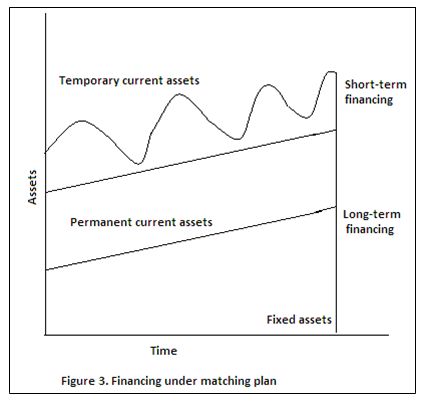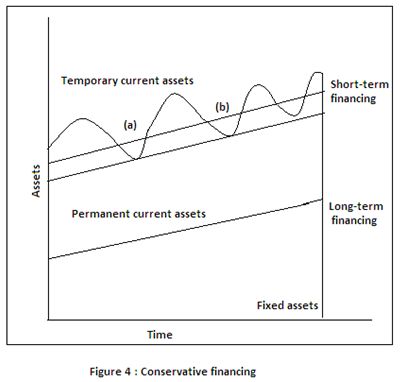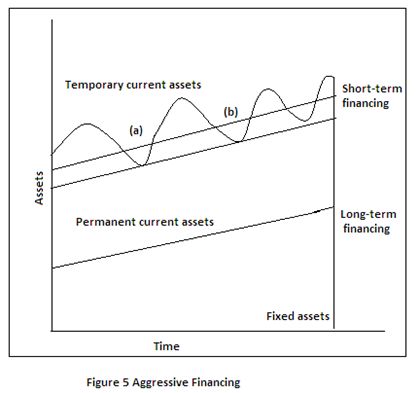Approaches to Financing Current Asset
Approaches to Financing Current Asset
Depending on the mix of short and long-term. Financing , the approach followed by a company may be referred to as :
o matching approach
o conservative approach
o aggressive approach
Matching Approach
The firm can adopt a financial plan which matches the expected life of assets with the expected life of the source of funds raised to finance assets. Thus, a ten-year loan may be raised to finance a plant with an expected life of ten years; stock of goods to be sold in thirty days may be financed with a thirty day commercial paper or a bank loan. The justification for the exact matching is that, since the purpose of financing is to pay for assets, the source of financing and the asset should be relinquished simultaneously. Using long-term financing for short-term assets is expensive as funds will not be utilized for the full period. Similarly, financing long-term asses with short-term financing is costly as well as inconvenient as arrangement for the new short-term financing will have to be made on a continuing basis.
When the firm following matching approach (also known as hedging approach), long-term financing will be used to finance fixed assets and permanent current assets and short-term financing to finance temporary or variable current assets. However, it should be realized that exact matching is not possible because of the uncertainty about the expected lives of assets. However, it should be realized that exact matching is not possible because of the uncertainty about the expected lives of assets.
Figure 3 is used to illustrate the matching plan over time. The firm’s fixed assets and permanent current assets are financed with long-term funds and as the level of these assets increases, the long-term financing level also increases. The temporary or variable current assets are financed with short-term funds and their level increases. The level of short-term financing also increases. Under matching plan, no short-term financing will be used if the firm has a fixed current assets need only.
Conservative Approach
A firm in practice may adopt a conservative approach in financing its current and fixed assets. The financing policy of the firm is said to be conservative when it depends more on long-term funds for financing needs. Under a conservative plan, the firm finances its permanent assets and also a part of temporary current assets the idle long-term funds can be invested in the tradable securities to conserve liquidity. The conservative plan relies heavily on long-term financing and, therefore, the firm has less risk of facing the problem of shortage of funds. The conservative financing policy is shown in Figure. Note that when the firm has no temporary current assets [e.g., at (a) and (b)]; the long-term funds released up the liquidity position of the firm.
Aggressive Approach
A firm may be aggressive in financing its assets. An aggressive policy, is said to be followed by the firm when it uses more short-term financing than varranted by the matching plan. Under an aggressive policy, the firm finances a part of its permanent current assets with short-term financing. Some extremely aggressive firm may even finance a part of their fixed assets with short-term financing. The relatively more use of short-term financing makes the firm more risky. The aggressive financing is illustrated in Figure 5.



